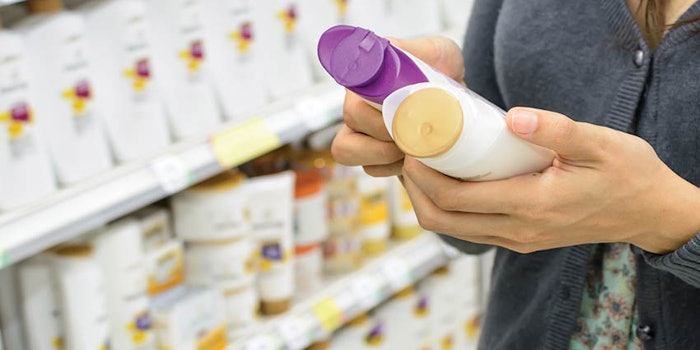
There are, of course, different kinds of performance and claims testing, and it might be worth taking some time to understand something about these differences. It’s worth asking some questions. The first question that must be asked is not a technical question, but a business one: What kind of performance claims are aligned with your brand?
If the performance claim, no matter how good, does not add to the value of the brand, then it has little if any value.
Brand Success is the Goal
Of course, there are lots of technical issues that must be considered, but this brand issue needs to come first. Why? Well, the obvious answer is that the idea of performance claim testing is to help the product achieve success. Let’s take that as our first “principle.”
The performance or claims results must contribute in some way to the business success of the product. While there are a number of ways this can be done, the strongest claim would be one that contributes to the brand equity. If you don’t agree with this first principle, then I’d like to hear from you!
Promises and Claims
So, if we accept the first principle, and we acknowledge the importance of the equity of our brand to our business success (and our continued employment), then it seems rational to conclude that we could either reinforce the “promise of the brand” to the consumer, or perhaps extend this “promise” in a way that is still well aligned with the brand identity, and that is related to consumers’ idea of their own identity.
This has profound implications for how we need to think about relevant performance claims.
It’s important that we remember that, with mandatory ingredient disclosure, the ingredients can become an important source of differentiation for our personal care product.
Perhaps the simplest version of a “performance claim” is a simple statement of fact. These kinds of statement of fact can include the presence of specific ingredients in the product. Of course, in many, but not all markets, this might also include “free” claims, where rather than the statement of fact that an ingredient is included, the statement relates to the fact that a specific ingredient or ingredient class is not included.
While these “free” claims are usually not scientific in their basis, they either relate to the brand promise or the consumer’s idea of his/her own identity. This may not be scientific, but it is very powerful because such claims resonate (or are believed to resonate) with the consumer.
Just the Facts
Let’s take as our first example a simple “claim” that is a statement of fact. Our personal care product contains a certain ingredient. Okay, so what does that mean?
Well, if our claim is that our product “contains ingredient Z,” it may be the simplest claim to prove, but have we added any value? That depends on our consumer and several factors related to the ingredient, the consumer and our brand.
All we need to do to satisfy this claim is to make sure that we include ingredient Z. We could choose to add additional performance claims to our product, but let’s first take the situation where we go no further.
Differentiating Ingredients
It’s important that we remember that, with mandatory ingredient disclosure, the ingredients can become an important source of differentiation for our personal care product.
If we need to distinguish our product (and who doesn’t?), we might choose to differentiate our brand from the one next to ours on the shelf (or, these days, the product next to ours on the computer screen), through the use of a “differentiating ingredient.” What qualities would our ingredient Z need to have to qualify?
Well, it seems as though there are a number of qualities that we need from ingredient Z, and it is worth taking time to think through what these may be. The first quality is that the ingredient is known, or can be made known, to the consumer.
If the consumer has no idea what this ingredient is, then it is unlikely that the presence of the ingredient will positively influence their buying decision. If the ingredient is known to the consumer, then several other attributes become important. The first is that the consumer has a positive association with the ingredient.
For instance, if that ingredient was silk or a silk derivative, then consumers would associate this with a number of positive attributes: soft feel, luxury, etc.
Then the question becomes whether the consumer would believe that the presence of this ingredient would have a beneficial influence on the performance of the product; next would come the question about whether these attributes are well aligned with the brand, and the “promise of the brand,” as viewed by consumers.
New Doesn’t Guarantee Success
If the ingredient is not well-known, we must be prepared to handle to cost of making that ingredient known, and educating the consumer regarding its positive attributes.
This additional cost of educating consumers about a new ingredient is the reason that so many “new” ingredients in personal care are actually ingredients known from other industries that consumers might recognize and associate with positive attributes. Have you ever spent time in the health food store, trying to determine if you can guess which magic ingredients will be picked up in personal care products?
There are of course questions about whether the positive attributes appeal to the current consumers of the brand or to new users, but these become more and more the province of marketing research, and less about the formulator’s role in understanding new product development and performance claims.
Of course, we need to be sensitive to these issues or risk being part of a colossal mistake, like “New Coke.” Just because the new formula performed better in blind taste tests, this did not lead to success!
The Comparison Question
There has been an important assumption in our discussion so far that is worth mentioning. We have been assuming that the performance claim will be shared with the consumer. Are there occasions where we would not, and if so what factors would influence our decision?
It seems likely that there could be many occasions where we would do some kind of performance testing and not attempt to share it with consumers, particularly if this involved comparison to another brand, and we were not willing to go through the hurdles of that kind of comparative advertising scrutiny and potential for legal challenge.
In the United States, for instance, the National Advertising Division (NAD) of the Better Business Bureau (BBB) is often asked to act as an arbiter and settle competing claims involving these kinds of comparisons.
Likewise, networks can have their own standards involving acceptable comparison claims. A consumer company may not want to subject the product and itself to this kind of challenge, but still want to know, for its own sense of confidence, whether the product can outperform the competition.
Even if the formulator wants to have some peace of mind by having some data that will be kept in-house regarding the ability of a new product to outperform the competition, it still strongly suggests discussion with the marketing department about the identity of the relevant competitor, which may or may not be the market leader.
Of course, the marketing folks may have already communicated these ideas in the brief for the new product when it went to R&D. In that case, there already is a clearly understood benchmark for performance.
Critical Questions
There’s a lot to think about with performance claims before we ever get to asking R&D to develop a protocol or calling a testing laboratory. Let’s review some of the things we need to think about, and the kinds of questions we need to ask ourselves.
These include:
- Is this a claim that we intend to share with consumers?
- How will it help to add value to the brand? Is a simple statement of fact, like “contains ingredient Z,” enough, or do we need more?
- Does ingredient Z have the right consumer awareness and attributes that align with our brand?
It’s only after we’ve asked ourselves these questions, answered them, and aligned ourselves with our company on the answers, that we can go on to discuss more specific issues around the performance claims.
If a simple statement of fact is not enough, what kind of performance do we need to measure? That will help lead us to other questions we need to answer; specifically, how do we measure this performance and how do we communicate the results?
Bring Me Your Feedback
I share with the editors of Cosmetics & Toiletries and Global Cosmetic Industry the desire that this be a discussion, and not a monologue. What questions do you have about performance claims testing?
What answers can you share? Please join in on the discussion if you can. Your contribution will help make this real two-way communication, and enhance the understanding for all of us.
Let’s Open a Dialogue
Have you ever thought about what personal care formulators and their R&D management need to know about performance and claims testing? I have, and I’ve come to the conclusion that the answer will depend on the kinds of products that are being developed, and the nature of the organization in which they work.
Maybe the best short answer to this question is that the more formulators and R&D management know, the better prepared they will be. Since preparation is often a good predictor of success, there’s a solid argument for better understanding. This is a big subject and an important one.
The only way I know to cover this much ground with a big subject is to start out one step at a time. In this first instalment, I’d like to begin by suggesting some questions that we need to ask ourselves before we start thinking about performance testing. I very much value your opinions about the subject, so please feel free to offer your contributions to this “discussion.” Please feel free to reach out to me at [email protected].
Kevin Gallagher, founder of Kevin Gallagher Consulting LLC, previously served as president of Croda’s Global Personal Care & Actives business. He has served on the board of the American Cleaning Institute and the Personal Care Product Council. Gallagher also serves as a non-executive director for P2 Science.










